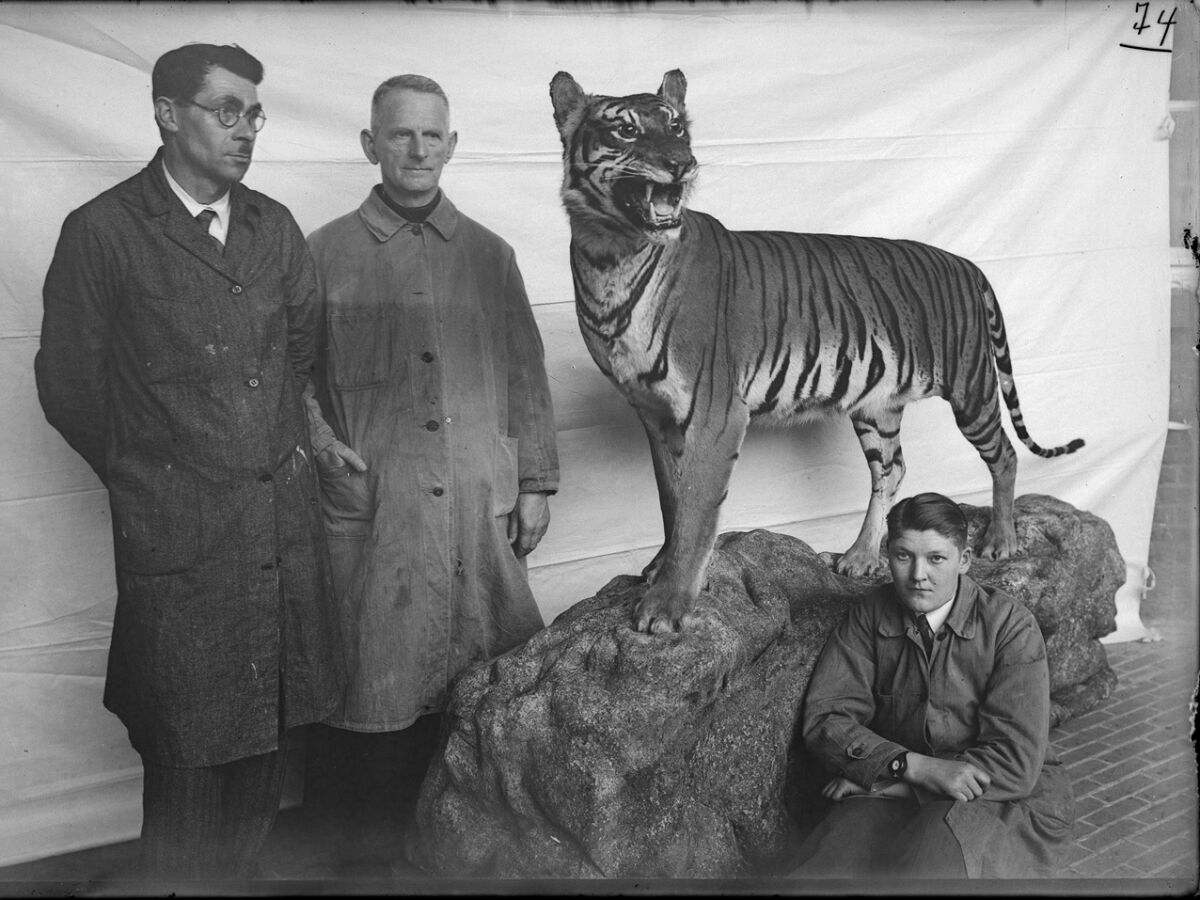
Object of the month
Taxidermy
Object of the Month
Taxidermy
Animal objects have fascinated us for centuries. The more lifelike, the better, but even the less "successful" stuffed animal is often appreciated in its strangeness. No matter how you look at taxidermy, perhaps as an outdated technique, a cruel or hopeless attempt to deny death, or a beautiful art form, looking at an animal object always evokes something. The practice of taxidermy, the preparation, or stuffing of animals, is centuries old. Where it began precisely is not clear. You can look for it in the first tanning of leather, mummification by the ancient Egyptians or with a medieval German emperor who had the wings of cranes preserved in order to properly train his falcons for the sport. And only centuries later came the early modern wonder rooms, with the well-known crocodiles on the ceiling (fairly stable because of their leather skin), and we begin to speak of real taxidermy; the lifelike stuffing of animals. But the techniques, and materials, were not yet durable and almost no stuffed animal from that period has been preserved. The greatest threat to stuffed animals was and still comes from pests, small insects that lay eggs and eat the organic material that makes up the outside of a stuffed animal. In the 19th century, great strides were made in controlling those types of pests. A major breakthrough in that was the use of arsenic soap (a toxic wash that makes the material unacceptable to insects). The publications with instructions for collecting and setting up began to take off, hand in hand with the growth of the biological/natural history scientific discipline.
.jpeg) The missionaries of Steyl were also given such a publication on their distant travels, the 'Kurze Anleitung zum Sammeln zoologischer und botanischer Objekte' (Short Introduction on Collecting Zoological and Botanical Objects) dated 1905. It describes the best ways to kill an animal without damaging it and that you should not wait longer than a day to clean the skin (to prevent rotting), that you should not let the skin and feathers dry in the sun (to prevent fading of the colors) and many other practical instructions.
The missionaries of Steyl were also given such a publication on their distant travels, the 'Kurze Anleitung zum Sammeln zoologischer und botanischer Objekte' (Short Introduction on Collecting Zoological and Botanical Objects) dated 1905. It describes the best ways to kill an animal without damaging it and that you should not wait longer than a day to clean the skin (to prevent rotting), that you should not let the skin and feathers dry in the sun (to prevent fading of the colors) and many other practical instructions.
Protecting animal skins from rotting or being eaten is one thing; “mounting” or lifelike positioning them is quite another. That requires experience and a good eye, but also knowledge of how the animal moved and behaved in life. According to tradition, Brother Philo from Steyl was skilled in this in the museum, and Brother Berchmans later learned the craft. Moreover, the Mission Museum has been working for many years with the renowned taxidermist company Bouten & Zoon of Venlo, which now produces on a world class scale. There are beautiful photos of the preparation of a Steyler calf with a king tiger, which pounces on the calf and bites the neck cruelly. A good example of the narrative power of a good taxidermy object, and that can still be viewed in the predator display case.
However, not all stuffed animals in the museum are world-class; the aesthetic quality varies greatly within the collection. What caused that, is not entirely clear. What is certain is that Brother Philo and Brother Berchmans themselves only prepared a fraction of the animals in the collection, a large part of which was taken from other collections. It is also quite possible that despite clear instructions, the quality of the objects sent by missionaries left much to be desired, a week-long journey through different climates is risky even for the best prepared animal. And some animals are notoriously difficult to portray faithfully. The museum is therefore home to a few felines with strange expressions, or somewhat cross-eyed monkeys. In contrast there are beautiful peacocks, cuddly koalas, and pangolins that look as though they could walk down the open animal group. But no matter how skilled the taxidermist is, death cannot be reversed and the animal-object always remains an object.